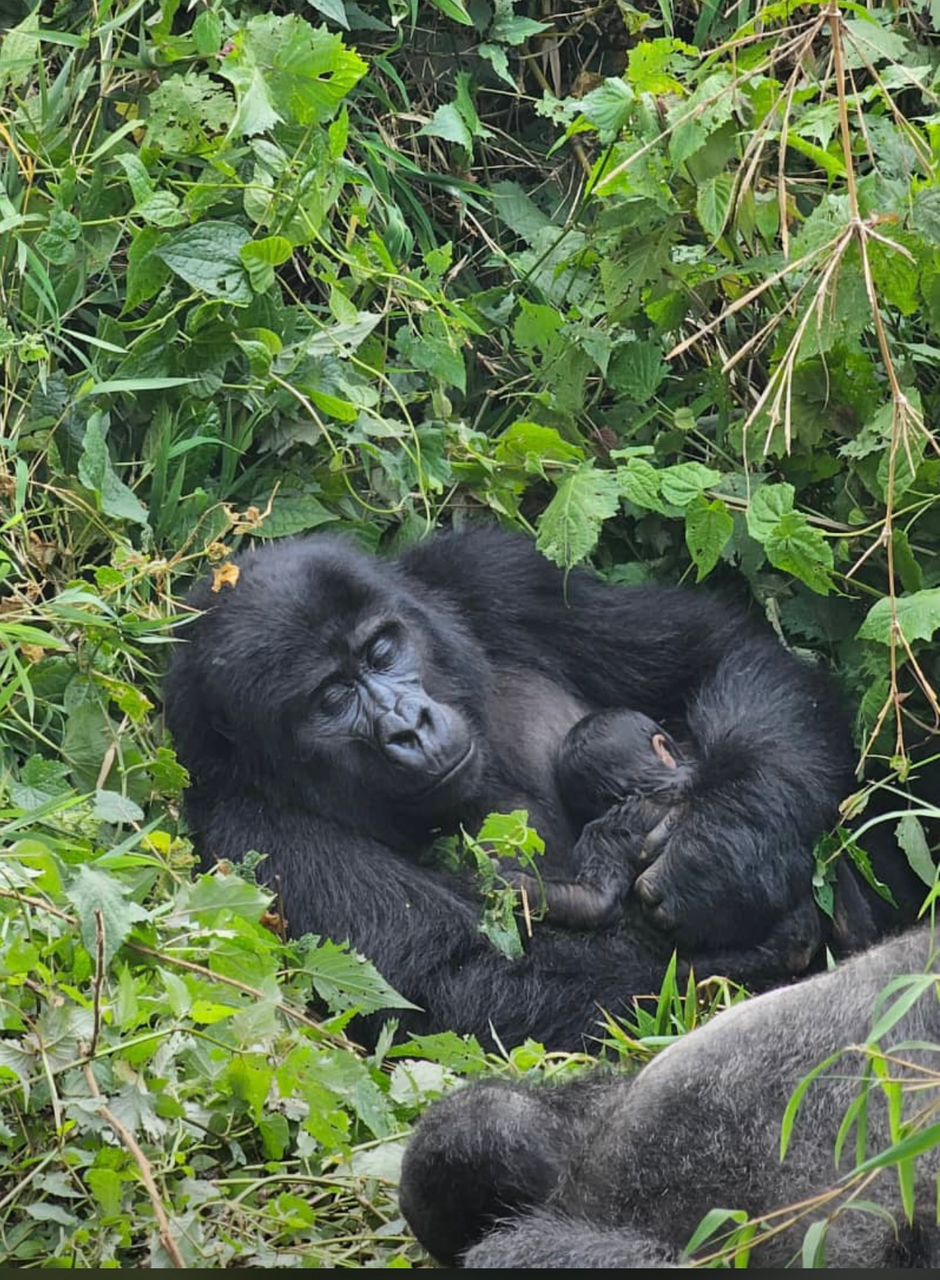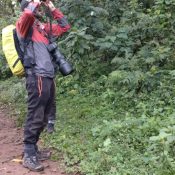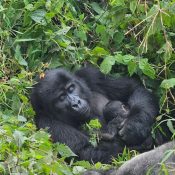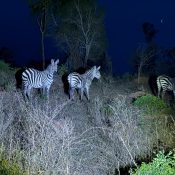
Gorilla Reproduction-A Slow but Precious Cycle in Conservation
Gorilla reproduction involves a polygynous mating system where a dominant male (silverback) mates with multiple females. Mountain Gorillas are Slow but keen, their Offspring per lifetime is typically 3 to 4, though some may have up to 6. They have the birth interval of 4 to 6 years, due to prolonged infant care and lactation.
The Gestation period of this great ape is about 8.5 months, similar to humans. Mothers nurse and protect their young ones for 3 to 4 years, delaying the next pregnancy. The birth of twins in this creature is very rare but possible, but most births result in a single baby.
This slow reproductive rate is one reason gorilla populations are vulnerable, and conservation efforts are vital.
IUCN Red List Status–as of 2018, the mountain gorilla (Gorilla beringei beringei) was listed as endangered. This status remains unchanged in 2025, reflecting ongoing threats such as habitat loss, disease, and poaching Population Trends of Mountain Gorilla.
Exclusive Gorilla habituation Experience
For the reason of intensive conservation efforts, the population has risen to approximately 1,063 individuals—the highest recorded since monitoring began.
Growth has been observed in both key habitats-Virunga Mountains (Rwanda, Uganda, DRC), Bwindi Impenetrable Forest–Sarambwe Reserve (Uganda and DRC)
Mountain Gorilla Conservation Success in the Greater Virunga Landscape
The survival of the endangered mountain gorilla (Gorilla beringei beringei) is a triumph of transboundary cooperation and grassroots commitment.
Greater Virunga Transboundary Collaboration-Uganda, Rwanda, and the Democratic Republic of Congo work together to protect shared ecosystems and gorilla populations. This alliance strengthens law enforcement, ecological monitoring, and community engagement across borders. https://greatervirunga.org/
Anti-Poaching Patrols are jointly conducted In Sarambwe–Bwindi National Park, dedicated teams conduct regular patrols to safeguard gorilla habitats and deter illegal activities. These efforts have significantly reduced poaching and improved habitat security.
Veterinary Interventions-In the Virunga region, Gorilla Doctors—an international team of wildlife veterinarians—provide medical care to wild gorillas. Their work includes treating injuries, monitoring health, and responding to disease outbreaks, ensuring the well-being of these great apes.
https://www.gorilladoctors.org/
Community-Based Tourism-Local communities are empowered through tourism initiatives that generate income, foster stewardship, and celebrate cultural heritage. Visitors experience gorilla tracking, nature walks, and cultural encounters—turning conservation into a shared journey.
The Authentic Batwa Village Experience
Daily Life of a Mountain Gorilla
Mountain Gorillas live Diurnal lifestyle, they are active during daylight hours, primarily focused on feeding. Early morning the great apes foraging begins as the sun rises at 6 am.
Late morning to midday-they start Resting and social interaction and later in the afternoon they resume foraging before settling down for the night.
Mountain Gorillas Live in stable, organized groups typically led by a dominant silverback. Bonds between adult males and females are strong and long-lasting. Female-to-female relationships tend to be weaker and less cooperative.
Mountain Gorillas groups are nonterritorial—they don’t defend land. The silverback defends his group, ensuring safety and cohesion rather than claiming space.
In Virunga populations, the average tenure of a dominant silverback is 4.7 years—a period marked by leadership, protection, and reproductive opportunity.
Gorillas are herbivores, and their diet varies by species and habitat-Mountain Gorillas Prefer leaves, stems, bark, and bamboo shoots, Bamboo shoots are especially favored for their fiber and nutrient richness
Less fruit available in high-altitude forests-Lowland Gorillas-Enjoy a more fruit-rich diet, including-Figs, wild berries roots and tubers. Also consume leaves and stems, but fruit makes up a larger portion
They have nutritional Strategy-Gorillas eat large quantities of low-energy vegetation to meet their needs, they rarely drink water directly, relying on moisture from plant.
The Nesting behavior of Mountain Gorillas
Each gorilla constructs a new nest daily using nearby vegetation. Infants share nests with their mothers; all others sleep alone. On cold or overcast mornings, gorillas may linger longer in their nests.
The silverback determines the group’s movements, guiding them to seasonal feeding grounds and safe resting areas. Acts as a mediator, calming disputes and maintaining harmony within the group. Defends the group from external threats such as predators (leopards), rival gorillas, or even human intrusions. Known to risk—and sometimes sacrifice—his life to protect his family.
When a mother dies or departs, her infant is not left alone. The silverback steps in, offering protection, companionship, and emotional reassurance. In a rare gesture of tenderness, the silverback may allow the orphaned infant to sleep in his nest—a privilege typically reserved for solitary rest.
The death of a silverback—whether by disease, accident, or poaching—can deeply unsettle the group’s cohesion. His absence leaves a leadership vacuum, threatening the stability of the family unit. If a mature male descendant is present and accepted, he may assume leadership, preserving group unity. If not, the group may fragment, with members dispersing or seeking new alliances. In some cases, the group may adopt an unrelated male, forging new bonds and reestablishing order.
This transition is not just logistical—it’s emotional. The silverback’s role is deeply embedded in the group’s daily rhythm, protection, and identity. https://www.wwf.org.uk/learn/fascinating-facts/gorillas
Recent Posts
Unlocking Echuya’s Potential for Sustainable Eco-tourism and responsible travel in Kisoro-Uganda
Gorilla Reproduction-A Slow but Precious Cycle in Conservation
Game Drives in Lake Mburo National Park- The Whispers of the Wild
Tags
Quick booking process
+256 782 467457




